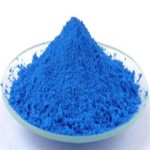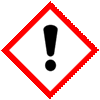CAS Number 27774-13-6 or 123334-20-3, Vanadyl Sulfate or Vanadyl Sulphate Grade Manufacturers Exporters







CAS Number 27774-13-6 or 123334-20-3, Vanadyl Sulfate or Vanadyl Sulphate Manufacturer Exporter
For Properties Specifications of Vanadyl Sulfate or Vanadyl Sulphate Click Properties, Specifications of Vanadyl Sulfate or Vanadyl Sulphate Manufacturer.
For Uses of Vanadyl Sulfate or Vanadyl Sulphate Click Uses of Vanadyl Sulfate or Vanadyl Sulphate Manufacturer.
For For SDS MSDS Sheet of Vanadyl Sulfate or Vanadyl Sulphate Click SDS Safety Data Sheet MSDS Sheet of Vanadyl Sulfate or Vanadyl Sulphate Manufacturer.
The Properties and Specifications of Vanadyl Sulfate or Vanadyl Sulphate:
Appearance: Blue colored crystalline powder.
Melting point: 105C.
Boiling point: 330C.
Relative density: around 3
Solubility: Soluble in water.
| Molecular formula | VOSO4-2H2O |
| Molecular weight | 198.94 |
| Description | Blue colored crystalline powder |
| Vanadium | Minimum 30.31 % |
| Assay | Minimum 97.00% |
| Solubility | Clear solution |
| Water Insolubles | 0.05% Maximum |
| pH | 2 to 3 |
The Uses of Vanadyl Sulfate or Vanadyl Sulphate:
Vanadyl sulfate is a common dietary supplement. Vanadium is used for preventing vanadium deficiency. It is also used for prediabetes and diabetes. People with type 2 diabetes find that vanadyl sulfate, like other forms of vanadium supplements, helps to stabilize their blood sugar, preventing both spikes and hypoglycemic drops. It appears that this is because it changes the way that insulin is processed in the body. For bodybuilders, the theory is that vanadyl sulfate forces glucose, proteins, and amino acids into the muscles at a higher rate. It has several hydrates. The pentahydrate is common. This hygroscopic blue solid is one of the most common sources of vanadium in the laboratory, reflecting its high stability.The MSDS-SDS Hazard Statement of Vanadyl Sulfate or Vanadyl Sulphate:
Vanadyl Sulfate or Vanadyl Sulphate SDS Safety Data Sheet
MSDS 13-Mar-22
1. Product Identification
Product Name & Other Names: Vanadyl Sulfate or Vanadyl Sulphate
CAS No.: 27774-13-6 or 123334-20-3
EINECS EC Number: 248-652-7
Relevant uses and uses advised against (if any): Industrial Manufacturing.
Suppliers: As per letterhead.
2. Hazards Identification
GHS, Globally Harmonized System Classification in accordance with 29 CFR 1910
Classification according to Regulation (EC) No 1272/2008
Acute toxicity, oral Category 4, H302
Skin corrosion/irritation Category 2, H315
Serious eye damage/eye irritation Category 2A, H319
Specific target organ toxicity, single exposure; Respiratory tract irritation Category 3, H335
Labeling according to Regulation (EC) No 1272/2008
GHS Label Elements  Irritant |
Signal Words: Warning
Hazard statements:
H302: Harmful if swallowed.
H315: Causes skin irritation.
H319: Causes serious eye irritation.
H335: May cause respiratory irritation.
Precautionary statements:
P262: Do not get in eyes, on skin, or on clothing.
P264: Wash skin thoroughly after handling.
P280: Wear protective gloves/protective clothing/eye protection/face protection.
P270: Do not eat, drink or smoke when using this product.
P273: Avoid release to the environment.
P330: Rinse mouth.
P362: Take off contaminated clothing and wash before reuse.
P301+312: IF SWALLOWED: Call a POISON CENTER or doctor/physician if you feel unwell.
P332+313: If skin irritation occurs: Get medical advice/attention.
P302+P352: IF ON SKIN: Wash with plenty of soap and water.
P305+P351+P338: IF IN EYES: Rinse cautiously with water for several minutes. Remove contact lenses, if present and easy to do. Continue rinsing.
P332+313: If skin irritation occurs: Get medical advice/attention.
P337+P313 If eye irritation persists: Get medical advice/ attention.
3. Composition/Information on Ingredients
Product Name & Other Names: Vanadyl Sulfate
CAS No.: 27774-13-6 or 123334-20-3
EINECS EC Number: 248-652-7
4. First Aid Measures
Always get medical attention after the first aid is over.
Inhalation: Remove to fresh air. Give oxygen if breathing is difficult; give artificial respiration if breathing has stopped. Keep person warm and quiet; get medical attention.
Ingestion: Induce vomiting immediately if directed by medical personnel. Never give anything by mouth to an unconscious person.
Skin Contact: Immediately flush skin with plenty of soap and water for at least 15 minutes. Remove contaminated clothing and shoes. Wash clothing before reuse. Thoroughly clean shoes before reuse. Get medical attention if irritation develops.
Eye Contact: Immediately flush eyes with plenty of water for at least 15 minutes, lifting upper and lower eyelids occasionally. Get medical attention.
5. Fire Fighting Measures
Fire: Not considered to be a fire hazard.
Fire Extinguishing Media: Use water spray, alcohol-resistant foam, dry chemical or carbon dioxide.
Special hazards arising from the substance or mixture: Sulphur oxides, Vanadium Compounds.
Extinguishing Media Not recommended: Avoid using solid water jet as it may scatter the fire.
Special Information: In the event of a fire, wear full protective clothing and NIOSH-approved self-contained breathing apparatus with full face piece operated in the pressure demand or other positive pressure mode. At elevated temperatures under fire conditions, it may produce toxic or irritating fumes. Fire-extinguishing work is done from the windward and the suitable fire-extinguishing method according to the surrounding situation is used.
6. Accidental Release Measures
Personal precautions, protective equipment, and emergency procedures: Avoid dust formation. Avoid breathing dust/fumes/gas/mist/vapors/spray. Ensure adequate ventilation. Use individual protective equipment (waterproof boots, suitable protective clothing, safety glasses, etc.). Prevent any contact with hot surfaces. Do not approach facing the wind.
Environmental precautions: Do not let the product enter drains, soil, or water sources.
Methods and materials used for containment cleanup procedures and Storage: Contain spilled material. Cover with an inert, non-combustible absorbent material, (e.g., sand, earth, diatomaceous earth, vermiculite). Vacuum or sweep-up and remove to an approved disposal container.
7. Handling and Storage
Precautions for safe handling: Apply according to good manufacturing and industrial hygiene practices. Ensure proper ventilation. Wash thoroughly after handling. Do not drink, eat, or smoke while handling. Avoid contact with skin, eyes, and clothing. Minimize dust generation. Avoid breathing dust/fumes/gas/mist/vapors/spray. Use individual protective equipment (waterproof boots, suitable protective clothing, safety glasses, etc.). Prevent any contact with hot surfaces.
Conditions for safe storage, including any incompatibilities: Store in cool, dry, and ventilated area away from heat sources and protected from sunlight in tightly closed original container. Keep air contact to a minimum. Do not leave the material container open. Store protected from heat, sparks and ignition sources and incompatible materials. Do not store with incompatible materials like strong oxidizing agents.
8. Exposure Controls/Personal Protection
Airborne Exposure Limits: Ceiling: 0.05 mg/m3 as per NIOSH IDLH
Ventilation System: In general, dilution ventilation is a satisfactory health hazard control for this substance. However, if conditions of use create discomfort to the worker, a local exhaust system should be considered.
Personal Respirators (NIOSH Approved): Not expected to require personal respirator usage. For conditions of use where exposure to dust or mist is apparent and engineering controls are not feasible, a particulate respirator (NIOSH type N95 or better filters) may be worn.
Skin Protection: Wear protective gloves and clean body-covering clothing.
Eye Protection: Use chemical safety goggles and/or full-face shield where dusting or splashing of solutions is possible. Maintain eye wash fountain and quick-drench facilities in work area.
Other Control Measures: Maintain good housekeeping in work area. Handle in accordance with good industrial hygiene and safety practice. Wash hands after handling.
9. Physical and Chemical Properties
Appearance: Blue crystals or crystalline powder.
Odor: Odorless.
Odor threshold: No data found.
pH: No data found.
Relative density: No data found.
Boiling Point: Decomposes.
Melting Point: 105C literature.
Flash point: No data found.
Auto-ignition temperature: No data found.
Decomposition temperature: No data found.
Upper/lower flammability or explosive limits: No data found.
Vapor pressure: No data found.
Vapor density: No data found.
Evaporation rate: No data found.
Flammability (solid, gas): No data found.
Partition coefficient: n-octanol/water: No data found.
Solubility: Soluble in water.
Viscosity: No data found.
Molecular Weight: 163 (anhydrous)
Chemical Formula: VOSO4-xH2O
10. Stability and Reactivity
Stability: Stable under ordinary conditions of use and storage.
Hazardous Decomposition Products: May produce oxides of Sulfur and Vanadium on decomposition.
Hazardous Polymerization: Will not occur.
Incompatibilities: Strong oxidizing agents, Moisture.
Conditions to Avoid: Heat, flame, dusting and incompatibles.
11. Toxicological Information
LD50 Dermal 4450 mg/kg ( Rabbit ).
LD50 Oral 4450 mg/kg ( Rat ).
Carcinogenic Effects: Not a reported carcinogen by IARC, NTP, ACGIH, OSHA or California proposition 65.
Mutagenic Effects: No data found.
Developmental Toxicity: No data found.
Reproductive Effects: No data found.
12. Ecological Information
Toxicity: No data found
Environmental Fate: When released into the soil, this material is not expected to evaporate significantly. When released into water, this material is not expected to evaporate significantly.
Persistence and Degradability: No data found.
Mobility: Likely to be mobile due to water solubility.
Bioaccumulation/ Accumulation: Not likely to accumulate due to water solubility.
Results of PBT and vPvB assessment: No data found.
13. Disposal Considerations
Whatever cannot be saved for recovery or recycling should be managed in an appropriate and approved waste disposal facility.
14. Transport Information
DOT USA, TDG Canada & ADR/RID Europe :
UN number: 2931 Class: 6.1 Packing group: II
Proper shipping name: Vanadyl sulfate.
IMDG/IMO:
UN number: 2931 Class: 6.1 Packing group: II
Proper shipping name: Vanadyl sulfate.
IATA:
UN number: 2931 Class: 6.1 Packing group: II
Proper shipping name: Vanadyl sulfate.
15. Regulatory Information
USA:
SARA 311/312 Hazardous Categorization: See section 2.
California Proposition 65: This product does not contain any Proposition 65 chemicals.
16. Other Information
European Labeling in Accordance with EC Directives:
H302 = Harmful if swallowed.
H315 = Causes skin irritation.
H319 = Causes serious eye irritation.
H335 = May cause respiratory irritation.
Classification according to EU Directives 67/548/EEC or 1999/45/EC:
Hazard Symbol:
Xi Irritant
Risk Phrases:
R22: Harmful if swallowed.
R36/37/38: Irritating to eyes, respiratory system & skin.
Anmol Chemicals & Pharmaceuticals Pvt. Ltd. is an off-shoot of Anmol Chemicals Taloja. It is located in MIDC Taloja and it is manufacturing pharmaceutical grades of API, Excepients, Food grade and Reagent grade chemicals. Anmol Chemicals & Pharmaceuticals Pvt. Ltd. is a several decades old group of companies, engaged in manufacturing, supplying, distributing, wholesale supplies for actual users, retail or small pack supplies for research and development chemicals, fine and speciality chemicals, pharmaceutical excipients, mineral fortifiers in chemically pure, Analytical reagent grade, IP BP USP Ph Eur EP JP and other pharmaceutical grade monograph including FCC Food grade chemicals and Nutraceuticals, Mineral Fortifiers at best prices.

Vanadyl Sulfate or Vanadyl Sulphate
Structure
CAS Number 27774-13-6 or 123334-20-3, Vanadyl Sulfate or Vanadyl Sulphate Manufacturer Exporter
ANMOL CHEMICALS & PHARMACEUTICALS Pvt. Ltd.
India, USA, Europe, UAE
TELEPHONE: +912223770100
Navi Mumbai, INDIA
e-mail: info(At the rate i.e. @)anmol.org
Copyright. 13-nov-24
We manufacture:

